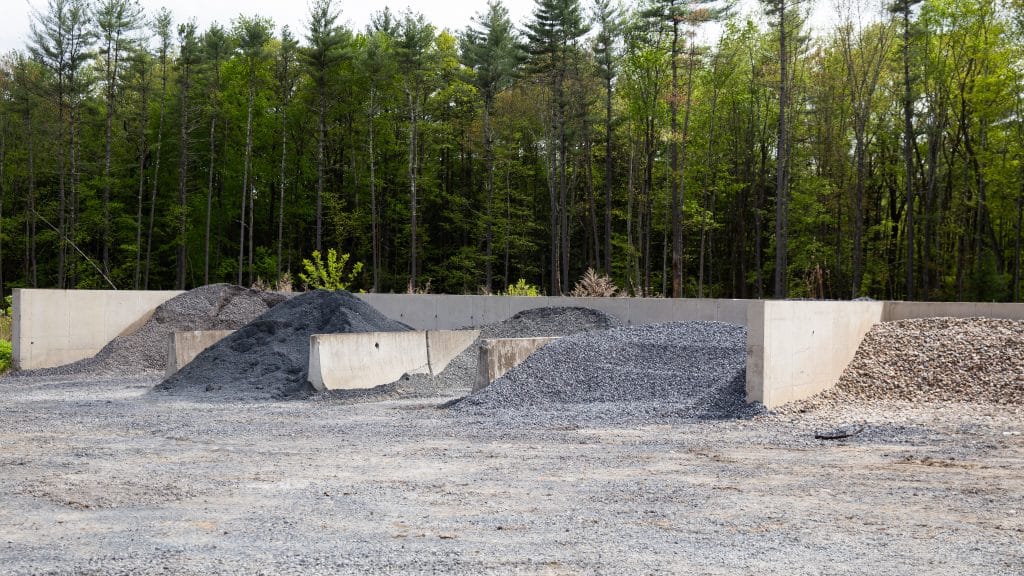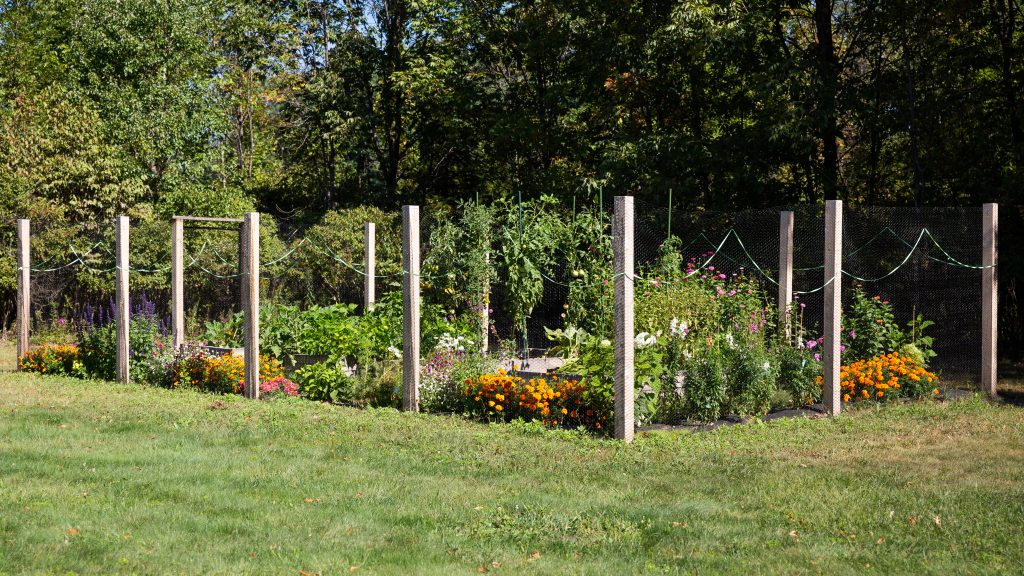
Bulk material is our catchall term for the soil, mulch, compost, and stone we sell in those bins you might have noticed at the back of the nursery. If you’re a local contractor, you already know these materials are the foundation for almost every project. But these aren’t just for our fellow industry professionals! With a little education, everyone can utilize these materials in their own DIY projects too.
The Run-Down
The most common bulk materials we sell are topsoil, mulch, and compost.
- Topsoil: Topsoil, also known as dirt. This is the base layer for every planting, from grass seed to new trees. Our screened topsoil is locally sourced and organic. It’s what we use whenever we install plants or lawns for Masseo Landscape, Inc., so you know it’s top quality.
- Mulch: Mulch is a necessity for formal planting beds, but it’s also hugely beneficial to all plants. Adding a layer of mulch insulates the roots from extreme temperatures, retains moisture, keeps down weeds and pests, and can provide nutrients as it breaks down. We always recommend out natural brown mulch for the biggest benefit, but we also have black dyed mulch.
- Compost: Another locally sourced gem, our compost is all decomposing plant material. We recommend blending it with topsoil in a two-to-one topsoil-to-compost ratio for use in vegetable gardens.

…But don’t let the stone intimidate you! These products are perfect for all your DIY hardscapers out there.
- Item 4 Gravel: a combination product with crush stone and aggregate, this is typically used as a base for driveways and hardscape projects.
- ¾” Stone: We also call this one drain stone! This particular size of crushed stone is perfect for french drains, sumps, and any other drainage projects you might have.
- Pea Gravel: A small size gravel perfect for gravel pathways and seating areas.
- Stone Dust: Made from the dust leftover from other gravel products, this non-porous stone is best used as a level base for laying stone or concrete pavers.
- River Rock: This product looks like it’s straight from a stony river bed! River rock is great for drainage and attractive to boot. We like to use it in swales, custom water features, and even as a finishing layer in planting beds instead of mulch.
Check out our 2020 Pricing List right here.

How Much Do I Need?
We sell our bulk material by the cubic yard – that’s 27 cubic feet. If you’re having a hard time visualizing, no worries! Here are a couple of ways we’ve put it in context.
- One cubic yard will cover a 10’x10’ area (100 square feet) at a 2” depth.
- The average bag of mulch of topsoil is about 3 cubic feet, so a cubic yard is about 8-10 bags.
- While it varies by material, a cubic yard weighs roughly 1.5 tons for everything but River Rock.
- Here’s a handy calculator we use. We know it says topsoil, but it’s accurate for mulch and compost as well, and close for stone!
But you can always, always ask us. Send us your project ideas, dimensions, and throw in a picture if you can! We’re happy to help you work it out.

Projects You Can Do this Spring with Bulk Material from Kalleco
The sky’s the limit, but there are some common favorites we hear about a lot.
- Blending topsoil and compost makes a perfect planting matrix for vegetable gardens, especially in raised vegetable beds. You can also add a layer of this to flower gardens.
- Adding a new layer of mulch to your planting beds can help suppress weeds and give your plants added nutrition and insulation this growing season! Adding a layer of landscape fabric beneath will really keep the pesky weeds at bay.
- DIY walkways and patios are a great project for the warm season! Pea gravel makes a great surface, but if you want to take it up a notch, we recommend picking up some natural bluestone. Remember to start with a good base: 3” of aggregate and a layer of stone dust will help your project stay stable and weed-free for years!




